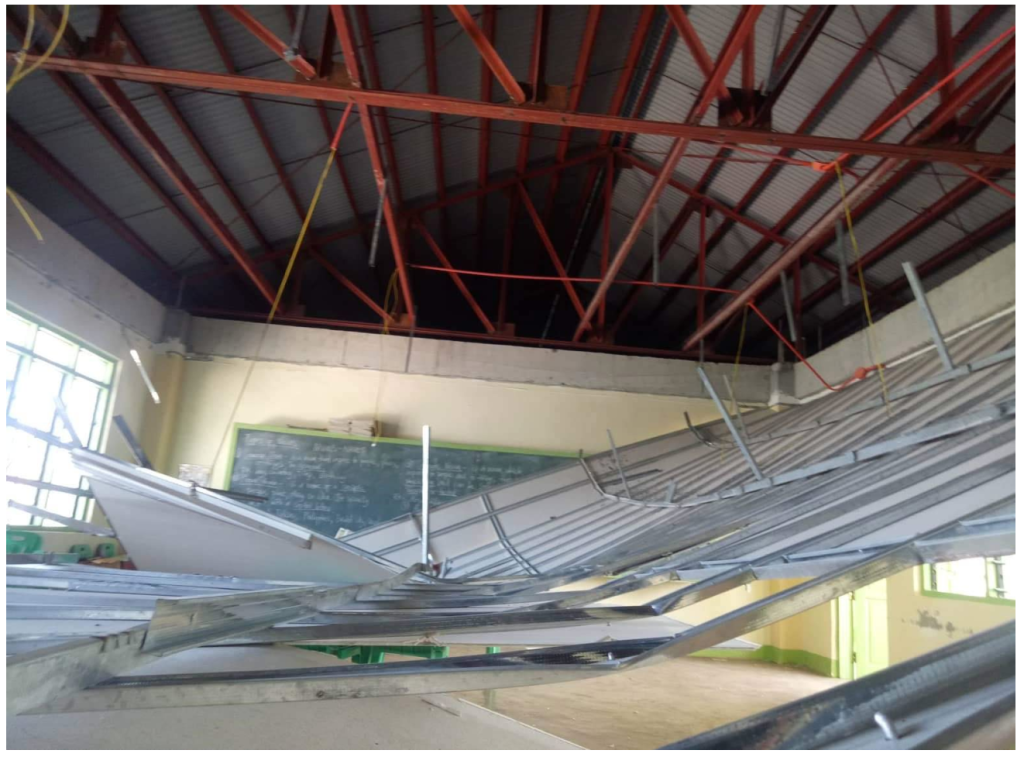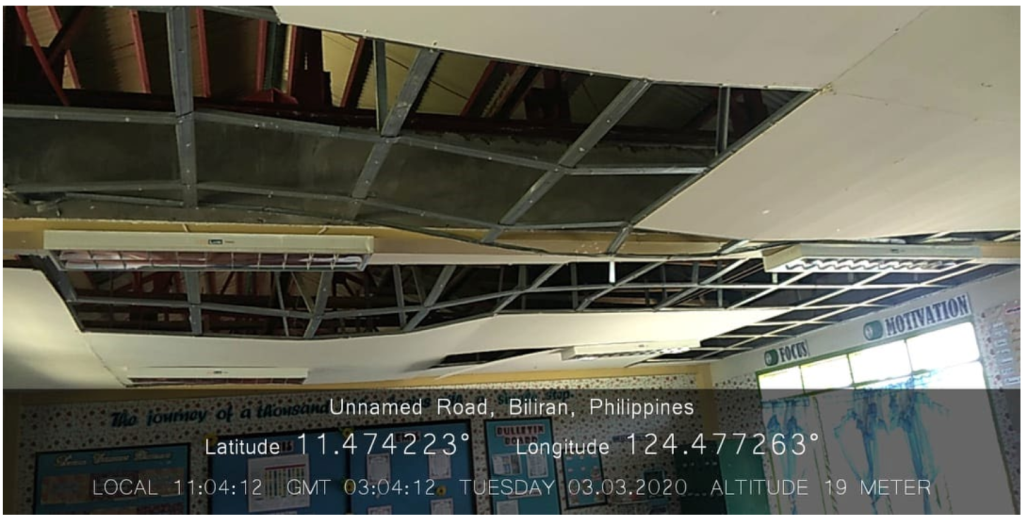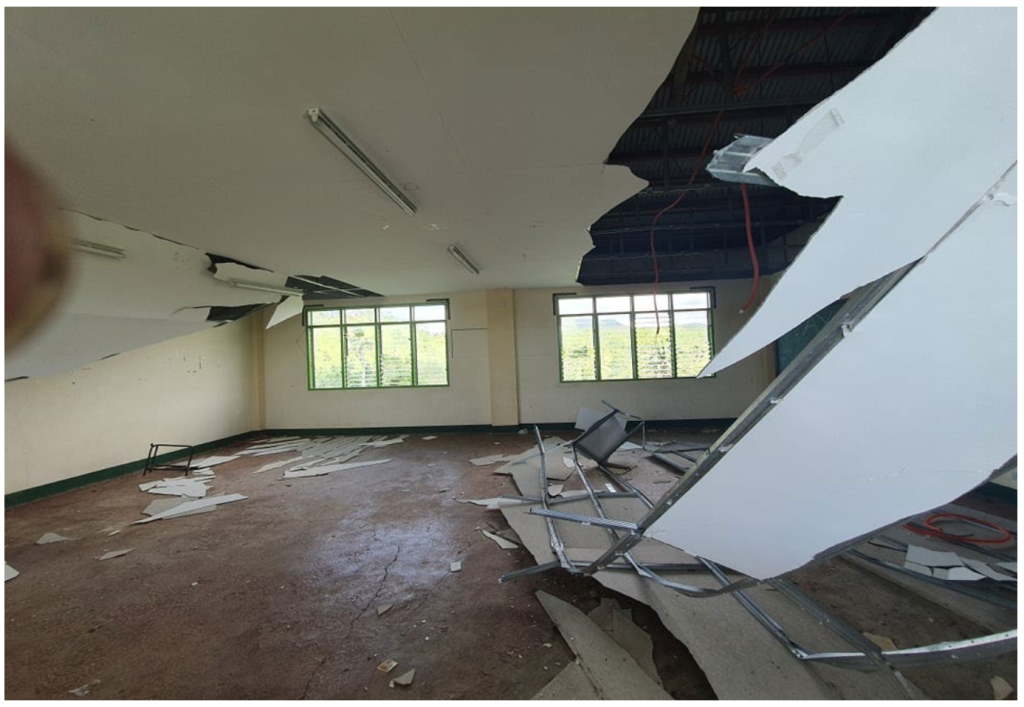Attached is an Aide Memoire from Former DepEd Undersecretary Alain Del B. Pascua on the Urgent Need to Repair and Replace the Ceilings of DepEd School Buildings Constructed from 2014 to 2019.
Table of Contents
Urgent Need to Repair and Replace the Ceilings of School Buildings Constructed from 2014 to 2019
In 2014, in the aftermath of the devastating Super Typhoon Yolanda, a big number of school buildings sustained major damage, particularly on the roofs and other related structures.
Following the destruction, the Department of Education (DepEd) conducted an intensive review of existing school building designs and upgraded them to conform with the latest National Building Code (NBC) and the National Structural Code of the Philippines (NSCP).
DepEd made the assessment together with Department of Public Works and Highways – Bureau of Designs (DPWH-BOD), with the assistance of the Japan International Cooperation Agency (JICA).
Then, the DPWH issued upgraded School Building Designs and DepEd agreed with the layouts.
The new designs were made to withstand 340 kph wind velocity in areas located in the Eastern Seaboard (Zone 1) and 270 kph for rest of the country (Zone 2). They were also expected to hold out against a magnitude 8 earthquake.
The plans include the adoption of metal furring and fiber cement board for suspended ceilings.
Ceiling Design
Before 2014, DepEd already used suspended ceilings in its standard School Building Designs composed of wooden materials, specifically 50mm X 50mm ceiling hangers and ceiling joists spaced at 600mm with ordinary and marine Plywood ceiling (see picture below).
The use of wood has several advantages:
Unlike metal, wood does not conduct heat and this increases thermal comfort and keeps the classrooms cooler.
Plywood, unlike ficem boards, is definitely easier to work with, especially when cutting manholes (or handholes) for future utility maintenance access inside the ceiling (kisame).
When the DPWH reviewed the designs of the school buildings in 2014, the materials used for the ceiling was changed from the conventional wood ceiling hangers and joists and marine plywood, to metal furring and fiber cement ceiling board.
It can be clearly seen in the design drawings that the spacing of metal furring is set at 400mm X 400mm, using metal carrying C-channels.
However, the design specifications were apparently not followed in the actual construction. Not only were metal C-channels spaced farther apart, there was inadequate and fewer metal furring supports or hangers, as evidenced in the pictures of the collapsed ceilings shown in the succeeding pages of this document.
Incidents of Collapsed Ceilings
The first incident of collapsed ceiling was reported in Ramon de Santos National High School in Cuyapo, Nueva Ecija. It happened in November 2017 under normal weather conditions. The event was broadcast by local media outfits.
As a result of the news, the DPWH contractor readily shouldered the expenses of hospitalization and medicines of the students who were injured. The contractor also the reconstructed the collapsed ceiling, without any additional cost to government.
Several other instances of ceiling collapse took place after a series of earthquakes and other natural disasters that struck the country. The damage were recorded by the Regional and Division Offices of DepEd.
Domingo Lacson National High School
Collapsed Ceilings due to Earthquakes
Collapsed Ceiling due to Typhoons
Proposed Remedies
The increasing number of incidents involving collapsed ceilings of school buildings has raised fear for the safety of learners and school personnel. Thus, efforts have been made by DepEd to immediately address this grave concern.
Revision of Designs
Through a DepEd letter to DPWH dated July 3, 2019, the undersigned requested a thorough review of the current ceiling designs of school buildings to include the material specifications and the methodology of construction.
In the reply dated December 12, 2019, the DPWH-BOD said no revisions were needed in the designs since the reported incidents of ceiling collapse were due to wrong construction or improper use of materials and the use of construction methodology that did not follow the standard designs and specifications.
Attached are copies of DepEd letter on July 3, 2019 and the reply of DPWH-BOD on December 12, 2019.
The conclusion of the DPWH was based on the investigations it conducted on the damaged structures.
However, the wave of earthquakes that happened in Cotabato, Surigao, Davao, Batanes; the spate of typhoons Ursula, Tisoy, Dodong, Usman, Amang, Vinta, etc.; and the Taal eruption all resulted in the collapse of ceilings.
This particular type of damage after a calamity had become a regular occurrence.
Had there been classes during the times when the catastrophes hit, the harm inflicted on the learners and teachers due to ceiling collapse would have been terrible.
Reporting on incidences of collapsed ceilings to DPWH for repairs
Instances of ceiling collapse are being reported to the DPWH Central Office for immediate action. For projects that are still under warranty, contractors of the DPWH were instructed to replace the damaged ceilings at once without any additional cost to government.
However, for projects past or beyond the warranty period, DepEd initiates the removal of the damaged ceilings. The buildings that need repairs are considered for programming in the regular rehabilitation program of the department.
Implementation of the Revised Designs of the Ceiling
While the DPWH maintains that there is no need to change the design of the ceiling of the school buildings, DepEd wants to replace the existing ceilings, specifically those that were constructed from 2014 onwards. This is to give top priority to the safety of learners and school personnel.
DepEd will be using the conventional materials such as ordinary and marine plywood on wooden joist, as shown in the drawings below.
The total estimated cost for replacing the ceiling of one classroom is P 117,000.00. This figure includes labor, other related taxes, and overhead cost.
Based on the consolidated data of the Education Facilities Division (EFD), from 2014-2019, a total of about 34,908 school buildings were constructed using the new ceiling design.
Out of this, 469 school buildings were reported to have damaged or collapsed ceilings due to calamities in the areas where the schools are located.
The replacement of some of these ceilings is already part of the repairs of the EFD for calamity-damaged school buildings. The allocation amounting to P 221M comes from the Quick Response Fund.
However, as a preventive measure for any accidents, DepEd is initiating the replacement of the ceilings of all classrooms constructed from 2014 to 2019.
This project will cover the remaining 34,439 school buildings, equivalent to 98,290 classrooms. It will require an estimated budget of P 11.5 billion.
Roof replacement in 34,439 school buildings is of utmost importance as the collapse of the ceilings is imminent during earthquakes and typhoons. The temblors and storms in 2018 and 2019 have proven this.








